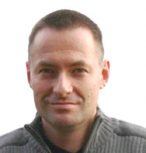DNA reveals the past and future of coral reefs
New DNA techniques are being used to understand how coral reacted to the end of the last ice age in order to better predict how they will cope with current changes to the climate. James Cook Univer

From 2005 to 2022, the main node of the ARC Centre of Excellence for Coral Reef Studies was headquartered at James Cook University in Townsville, Queensland (Australia)








Abstract: One mechanism by which marine organisms may respond to climate shifts is range shifts. The corkwing wrasse (Symphodus melops) is a temperate fish species, inhabiting the coasts of Europe, that show strong indications of current as well as historical (ice-age) range shifts towards the north. Nine neutral microsatellite DNA markers were screened to study genetic signatures and spatial population structure over the entire geographic and thermal gradient of the species from Portugal to Norway. A major genetic break (FST = 0.159 average among pairs) was identified between Scandinavian and more southern populations, with a marked reduction (30% or more) in levels of genetic variability in Scandinavia. The break is probably related to bottleneck(s) associated with post-glacial colonization of the Scandinavian coasts, and indicates a lack of present gene flow across the North Sea. The lack of gene flow can most likely be attributed to the species’ need for rocky substrate for nesting and a relatively short pelagic larval phase, limiting dispersal by ocean currents. These findings demonstrate that long-distance dispersal may be severely limited in the corkwing wrasse, and that successful range-shifts following present climate change may be problematic for this and other species with limited dispersal abilities, even in the seemingly continuous marine environment.
Biography: Halvor’s primary research interest is on connectivity and microevolutionary patterns and processes. He started working on such issues in 2000. Since then, he has worked on linking genetic data with physical and biological data in different modeling approaches in studies of several high gene flow species. The novel outcome of these papers was a better understanding of underlying mechanisms behind the observed genetic patterns; for instance, determining during which lifestage gene flow more likely occurs. Another outcome was knowledge on the extent these spatial differences are caused by ecological responses (i.e. plasticity) or local adaptations. He has also investigated mechanisms behind genetic patterns by ecological studies of egg density and current measurements in fjords, or behaviour data, all combined with advanced statistics. He has been involved in and also lead (as PI) several research projects that have received funding from several sources in EU, ESF (European Science Foundation), the Norwegian Research Council (NRC), and Nordic funding sources (Nordic Council).
New DNA techniques are being used to understand how coral reacted to the end of the last ice age in order to better predict how they will cope with current changes to the climate. James Cook Univer
A new study on the effects of climate change in five tropical countries has found fisheries are in more trouble than agriculture, and poor people are in the most danger. Distinguished Profess
James Cook University researchers have found brightly coloured fish are becoming increasingly rare as coral declines, with the phenomenon likely to get worse in the future. Christopher Hemingson, a
Researchers working with stakeholders in the Great Barrier Reef region have come up with ideas on how groups responsible for looking after the reef can operate more effectively when the next bleaching
Abstract: As marine species adapt to climate change, their heat tolerance will likely be under strong selection. Individual variation in heat tolerance and its heritability underpin the potential fo
Abstract: The Reef Ecology Lab in KAUST’s Red Sea Research Center explores many aspects of movement ecology of marine organisms, ranging from adult migrations to intergenerational larval dispersal
Abstract: Macroalgal meadows are a prominent, yet often maligned component of the tropical seascape. Our work at Ningaloo reef in WA demonstrate that canopy forming macroalgae provide habitat for ad
Abstract: Sharks are generally perceived as strong and fearsome animals. With fossils dating back at least 420 million years, sharks are not only majestic top predators but they also outlived dinosa
Abstract: Connectivity plays a vital role in many ecosystems through its effects on fundamental ecological and evolutionary processes. Its consequences for populations and metapopulations have been
Abstract: Evolution of many eukaryotic organisms is affected by interactions with microbes. Microbial symbioses can ultimately reflect host’s diet, habitat range, and even body shape. However, how
Abstract: The past few years have seen unprecedented coral bleaching and mortality on the Great Barrier Reef (GBR) but the consequences of this on biodiversity are not yet known. This talk will expl